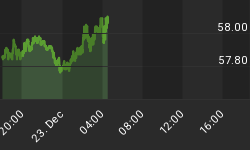Financial markets are vastly underestimating the financial risk from climate change, according to the International Monetary Fund.
Global temperatures have already increased by 1.1 degrees Celsius since preindustrial times and are on track to warm somewhere around 3 degrees C by the end of the century, although much depends on what governments do to rein in greenhouse gas emissions. That level of warming is “expected to adversely impact the world’s stock of natural assets,” the IMF said in its Global Financial Stability Report in April. Or, put bluntly, “the projected increase in the frequency and severity of disasters due to climate change is a potential threat to financial stability.”
Climate change poses massive financial risk to physical infrastructure, a rather straightforward concept. For example, the predicted losses from floods in the world’s 136 largest coastal cities could exceed $1 trillion annually in 2050 with no change in policies, the IMF said.
But markets are not adequately assessing this risk, and a “sudden shift in investors’ perception of this future risk could lead to a drop in asset values, generating a ripple effect on investor portfolios and financial institutions’ balance sheets,” the Fund said. After the 2011 floods in Thailand, for instance, the country’s stock market fell 30 percent over 40 days.
Pricing in this risk is “daunting,” the IMF said, but with the climate crisis worsening, the risk is rising and asset values are not reflecting the danger. “Equity valuations as of 2019 do not appear to reflect the predicted changes in physical risk under various climate change scenarios,” the IMF said.
Meanwhile, there is also “transition risk,” or the array of policies, technological change, and shifts in markets towards a low-carbon economy that render certain asset classes much less valuable.
There is roughly $18 trillion in equity and $8 trillion of corporate bonds linked to the fossil fuel system, according to a separate report from Carbon Tracker. That equates to about 24 percent of the global equity market and 53 percent of the non-financial corporate bond market.
These assets are in danger of a dramatic repricing downward. Carbon Tracker says that the rents, capex and profits of fossil fuel system, along with the financial assets tied into those flows, are “at risk of losses long before infrastructure is written down.” The group pointed to the European electricity, coal and oil services sector as an example where that has already begun to unfold.
The fossil fuel system is “ripe for disruption,” because it is “low growth, high fixed cost, low return, and (incredibly) planning on expansion even as demand peaks,” the report said. The COVID-19 pandemic has blown up the sector, and, to be sure, what happens next is unclear. But demand may not bounce back to pre-pandemic levels for years, if ever.
Related: Gold Soars To 7-Year Highs
It does not take oil demand dropping to zero for there to be massive financial disruption. Renewables only need to capture all the growth in demand going forward. The challenger (i.e. renewables) “typically has a market share of under 5%” when it takes all the growth, Carbon Tracker notes. At that point, the incumbent (i.e. fossil fuels), “by definition enters into terminal decline.” In other words, “peak demand happens early in energy transitions.”
The financial danger is made much worse when incumbents plan for indefinite growth, a vision that many oil companies do not shy away from. “The gap between their plans and reality is a major source of stranded assets, overcapacity and lower prices,” Carbon Tracker warned.
On top of that, externalities are not accounted for – some economists put global warming and pollution costs at around 100 euros per tonne of CO2 – and are dumped onto society at large. That could easily change with stricter climate policy, leaving fossil fuel assets much less lucrative or stranded altogether.
Adding to the sector’s woes, renewable energy is not standing still either. Costs continue to decline.
These dynamics are reinforcing in a virtuous (or vicious, depending on one’s perspective) circle, with technology, policy, and capital markets conspiring against the incumbent. For example, a coal plant begins to lose market share in the electricity sector, investors turn against the company, political influence wanes and stricter climate policy adds further pain. Capital dries up and companies go out of business. The cost of cleanup is put on the public.
What happened for coal will happen for oil and gas. “Now is the time to put in place an orderly wind-down of assets, rather than trying to rebuild the unsustainable,” Carbon Tracker said.
By Nick Cunningham of Oilprice.com
More Top Reads From Safehaven.com:

















